ક્રિસ Grinter દ્વારા, જુલાઈ 25 ના રોજ, 2011 આ સોમવારે હું સંપૂર્ણપણે અલગ કંઈક માટે સામાન્ય Arctiinae માંથી પ્રસ્થાન છું – એક microlep! આ Nepticulidae છે, Stigmella diffasciae, અને તે એક ભારે મોટું પર પગલાં 6 મી.મી.. હું આ શલભ ફેલાવવા માટે ક્રેડિટ ન લઈ શકે – હું ફોટોગ્રાફ છે nepticulids તમામ સાયન્સ ઓફ કેલિફોર્નિયા એકેડેમી છે અને તે એક postdoctorate પદ માટે અહીં હતી જ્યારે દવે વાગ્નેર દ્વારા ફેલાય છે.
આ ઇયળો પાંદડા ઉપર બાજુ ખાણ Ceanothus અને કેલિફોર્નિયામાં સીએરા નેવાડાના તળેટીમાં માંથી માત્ર જાણીતા છે. જીનસ મુક્ત છે, જેથી તમે નોર્થ અમેરિકન જાતિઓ ની આવૃત્તિ વળેલું રહ્યાં છો, તો અહીં ઉપલબ્ધ (.પીડીએફ).
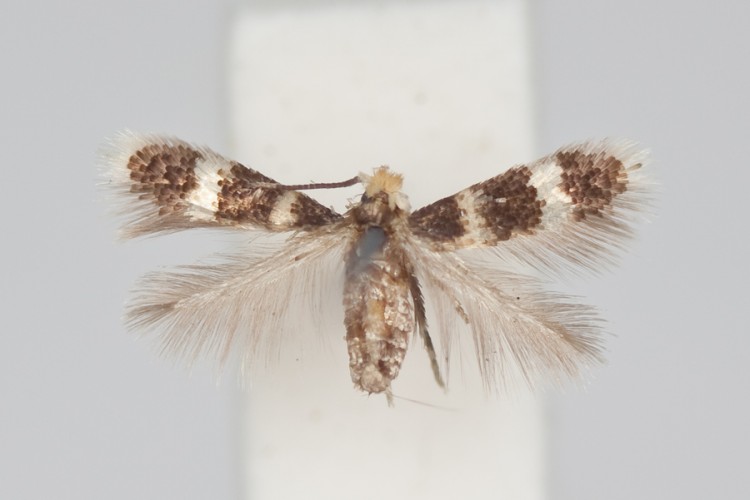 Stigmella diffasciae (Nepticulidae)
ક્રિસ Grinter દ્વારા, જુલાઈ 22 પર, 2011 તે છેલ્લા GOP પડકાર થી થોડો સમય થયો છે, પરંતુ આ એક સોફ્ટબોલ છે. હું તેઓ વધુ યોગ્ય છબી શોધો માત્ર ખૂબ બેકાર હતા આશા છું…
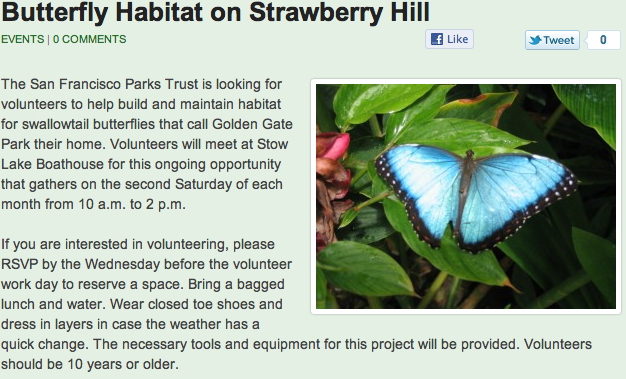
ક્રિસ Grinter દ્વારા, on July 19th, 2011 What would Jesus do if he had some free time – maybe cure a disease, end a war, or feed the starving – but nah, everyone sees that coming. Why not shock them to the core – burn your face on a Walmart receipt! ઓછામાં ઓછું, that’s what a couple in South Carolina believe to have found, a Walmart receipt with Jesus’s face on it. This isn’t exactly new or exciting, humans have a wonderful ability to recognize a face in just about anything. Jesus and other characters “appear” on random things all the time, and even in 2005 a shrine was built to the Virgin Mary around a water stain in a Chicago underpass.
Pareidolia anyone? ખરેખર, that face looks pretty convincing, I’m not too sure this wasn’t just faked or “enhanced”. The closeups even look like there are fingerprints all over it. Since I don’t have a walmart anywhere near me or a walmart receipt on hand I can’t determine how sensitive the paper is and how easy it would have been to do – but how long do you think before it shows up on ebay? કોઈ પણ ઘટનામાં, it looks much more like James Randi to me than Jesus (at least we actually know what Randi looks like!).
 from CNN
ક્રિસ Grinter દ્વારા, on July 18th, 2011 Over on Arthropoda, fellow SFS blogger Michael Bok shared an image of his field buddy, Plugg the green tree frog. My first thought was of a similar tree frog that haunted welcomed me everywhere I went in Santa Rosa National Park, કોસ્ટા રિકા. Needless to say, Costa Rica instills a sudden habit of double checking everything you are about to do. This species is known as the milk frog (Phrynohyas venulosa) for their copious amounts of milky white toxic secretions. One of the first stories Dan Janzen told me while while I was with him at Santa Rosa was about this species – and accidentally rubbing his eye after holding it. Thankfully the blindness and burning was only temporary.
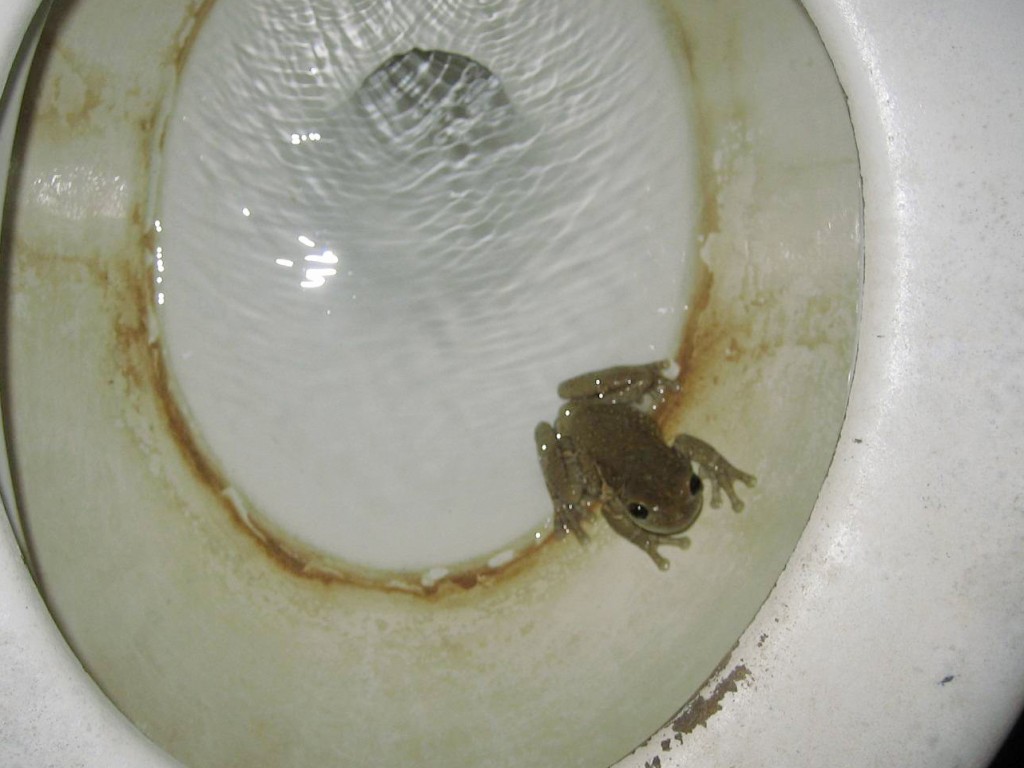 Milk Frog: Phrynohyas venulosa
ક્રિસ Grinter દ્વારા, on July 18th, 2011 I’ll keep the ball rolling with Arctiinae and post a photo today of Ctenucha brunnea. This moth can be common in tall grasses along beaches from San Francisco to LA – although in recent decades the numbers of this moth have been declining with habitat destruction and the invasion of beach grass (Ammophila arenaria). But anywhere there are stands of giant ryegrass (Leymus condensatus) you should find dozens of these moths flying in the heat of the day or nectaring on toyon.
 Ctenucha brunnea (Erebidae: આર્ક્ટિના)
ક્રિસ Grinter દ્વારા, on July 12th, 2011 Well as you may have guessed the subject isn’t as shocking as my title suggests, but I couldn’t help but to spin from the Guardian article. I really find it hilarious when I come across anything that says scientists are “astounded”, “baffled”, “shocked”, “puzzled”, – I guess that’s a topic for another time… Nevertheless a ખરેખર cool butterfly has emerged at the “Sensational Butterflies” exhibit at the British Museum in London – a bilateral gynandromorph! The Guardian reports today that this specimen of Papilio memnon just emerged and is beginning to draw small crowds of visitors. I know I’d love to see one of these alive again – although the zoo situation would take away quite a bit of the excitement. I think the only thing more exciting than seeing one of these live in the field would be to net one myself!
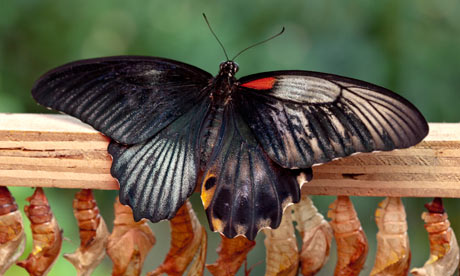
One little thing tripped my skeptical sensors and that is the quote at the end of the article taken from the curator of butterflies, Blanca Huertas. “The gynandromorph butterfly is a fascinating scientific phenomenon, and is the product of complex evolutionary processes. It is fantastic to have discovered one hatching on museum grounds, particularly as they are so rare.”
કૂવો, I don’t specifically see how these are a “product of … evolutionary processes” inasmuch as બધા life in બધા forms is a product of evolution. These are sterile “glitches” that are cool, but not anything that has been specifically evolved for or against. Perhaps it would be more adept to call this a fascinating process of genetics (which the article actually describes with accuracy). પણ – butterflies emerge as adults and hatch as caterpillars – but that’s just me being picky.
ક્રિસ Grinter દ્વારા, on July 11th, 2011 આજના શલભ એ SE એરિઝોના અને મેક્સિકોની એક સુંદર અને દુર્લભ પ્રજાતિ છે: લેરિના અવતાર (Erebidae: આર્ક્ટિના). અન્ય દિવસની ઉડતી પ્રજાતિઓની જેમ તે તેજસ્વી રંગીન અને સંભવતઃ અપોસેમેટિક છે. અંતમાં, યજમાન છોડ મિલ્કવીડ છે અને કેટરપિલર એટલો જ અદભૂત છે (નીચે).
 લેરિના અવતાર (Erebidae: આર્ક્ટિના)
જૂની આ તસવીર, સ્પ્રેડ નમૂનો ભાગ્યે જ પ્રાણી ન્યાય કરે છે, પરંતુ એક નસીબદાર ફોટોગ્રાફર ઓવિપોઝીટીંગ સ્ત્રી મળી ટક્સનની બહાર એક ટેકરીની ખૂબ ટોચ પર, એરિઝોના. જ્યારે તમે ત્યાં હોવ ત્યારે ફિલિપના અન્ય કેટલાક શ્રેષ્ઠ ફોટોગ્રાફ્સ તપાસો SmugMug પર.
 લેરિના અવતાર - ફિલિપ ક્લાઈન, બગગાઇડ મેં ઉપર જણાવ્યું તેમ આ જીવાતમાં પણ એટલી જ પ્રભાવશાળી ઈયળ છે જે ખવડાવે છે એસ્ક્લેપિયાસ લિનેરિયા (પીનીડલ મિલ્કવીડ).
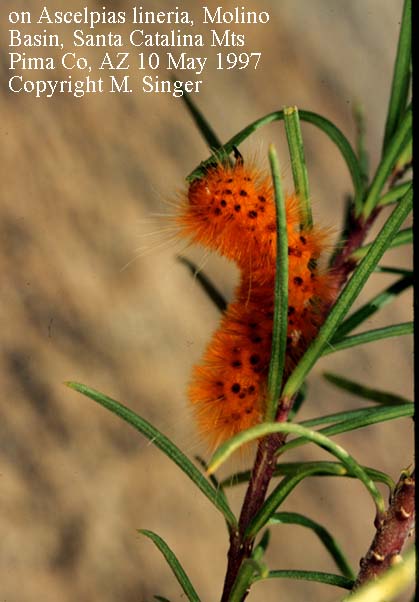
ક્રિસ Grinter દ્વારા, જુલાઈ 5 મી પર, 2011 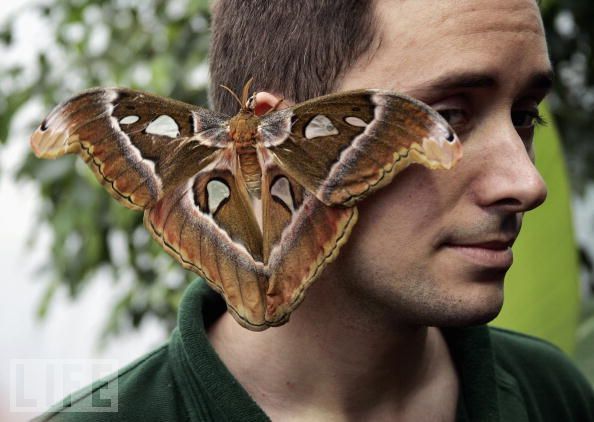
It seems like there is a preponderance of urban legends that involve insects crawling into our faces while we sleep. The most famous myth is something along the lines of “you eat 8 spiders a year while sleeping“. Actually when you google that the number ranges from 4 to 8… up to a pound? Not surprising things get so exaggerated online, especially when it concerns the ever so popular arachnophobia. I doubt the average American eats more than a few spiders over their entire lifetime; your home simply shouldn’t be crawling with so many spiders that they end up in your mouth every night! A similar myth is still a myth but with a grain of truth – that earwigs burrow into your brain at night to lay eggs. It isn’t true that earwigs are human parasites (thankfully), but they do have a predisposition to crawl into tight, damp places. It is possible that this was a frequent enough occurrence in Ye Olde England that the earwig earned this notorious name. Cockroaches have also been documented as ear-spelunkers – but any crawly insect that might be walking on us at night could conceivably end up in one of our orifices.
I have however never heard of a moth crawling into an ear until I came across this story today! I guess a confused Noctuid somehow ended up in this boy’s ear, although I can’t help but to wonder if he put it there himself… Moths aren’t usually landing on people while they are asleep nor are they that prone to find damp, tight spots. But then again anything is possible, some noctuids do crawl under bark or leaves in the daytime for safe hiding. I even came across another story of an ear-moth form the UK (not that the Daily Mail is a reputable source).
સ્વાભાવિક રીતે, some lazy news sources are using file photos of “moths” instead of copying the photo from the original story. It’s extra hilarious because one of the pictures used is of a new species of moth described last year by Bruce Walsh in Arizona. Lithophane leeae has been featured on my blog twice before, but never like this!
On a closing note here is a poem by Robert Cording (also where the above image was found).
Consider this: a moth flies into a man’s ear
One ordinary evening of unnoticed pleasures.
When the moth beats its wings, all the winds
Of earth gather in his ear, roar like nothing
He has ever heard. He shakes and shakes
His head, has his wife dig deep into his ear
With a Q-tip, but the roar will not cease.
It seems as if all the doors and windows
Of his house have blown away at once—
The strange play of circumstances over which
He never had control, but which he could ignore
Until the evening disappeared as if he had
Never lived it. His body no longer
Seems his own; he screams in pain to drown
Out the wind inside his ear, and curses God,
Who, hours ago, was a benign generalization
In a world going along well enough.
On the way to the hospital, his wife stops
The car, tells her husband to get out,
To sit in the grass. There are no car lights,
No streetlights, no moon. She takes
A flashlight from the glove compartment
And holds it beside his ear and, unbelievably,
The moth flies towards the light. His eyes
Are wet. He feels as if he’s suddenly a pilgrim
On the shore of an unexpected world.
When he lies back in the grass, he is a boy
ફરી. His wife is shining the flashlight
Into the sky and there is only the silence
He has never heard, and the small road
Of light going somewhere he has never been.
– Robert Cording, Common Life: Poems (Fort Lee: CavanKerry Press, 2006), 29–30.
ક્રિસ Grinter દ્વારા, જૂન 30 પર, 2011 
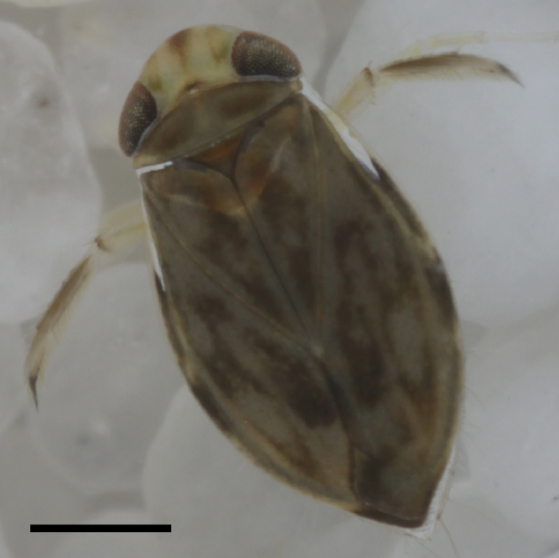 Micronecta scholtzi યુરોપિયન દેશભરમાં ટેકરીઓ ઈશ્કી ના સમૂહગીત માં જીવંત છે, ચીસો, પુરૂષ જળચર ભૂલો. ઉપર લિટલ જંતુ, Micronecta scholtzi (Corixidae), એક ભારે મોટું 2.3mm અને હજુ સુધી ખાતે પગલાં એક ક્લિક પેદા / સરળતાથી સાઉન્ડ buzzing માનવ બુલંદ પાણીની સપાટી ઉપર કાન. પરિપ્રેક્ષ્ય મૂકવામાં કરવા માટે કે: કોઈને વાત પાણીની સાંભળવા કરવાનો પ્રયાસ કરતી વખતે ઉભા Poolside લગભગ અશક્ય છે, હજુ સુધી આ મિનિટ જંતુ પેદા એક ક્લિક અવાજે પૂરતી એક પાર્થિવ આર્થ્રોપોડ ભૂલથી હોઈ. જ્યારે તે ખૂબ પ્રભાવશાળી અવાજ નથી જ્યારે અમે તીડ જેવા અન્ય અવાજે જંતુઓ દ્વારા ઘેરાયેલા આવે, એમ. scholtzi બહાર વળે એક stunningly અવાજે પ્રાણી હોઈ જ્યારે તમે ધ્યાનમાં લેવા શરીરના કદ અને મધ્યમ સાઉન્ડ અમારા કાન સુધી પહોંચવા માટે મારફતે પ્રચાર કરવામાં આવે છે. નંબરો ક્લિક્સ તીવ્રતા પાણીની સુધી પહોંચી શકે છે કે મૂકો 100 ડીબી (સાઉન્ડ પ્રેશર સ્તર, એસપીએલ). જંતુ જગતમાં આપણને સંકોચો અને આ અવાજ ઉત્પાદન સમાન છે એ જ અંતરે jackhammer! તેથી શું પૃથ્વી પર મંજૂરી આપી છે આ થોડું ભૂલ આ અવાજ બનાવવા અને એક વિશ્વ શિકારીઓનો સંપૂર્ણ તેની સાથે દૂર વિચાર?
લેખકો કુદરતી નિર્દેશ કેવી રીતે આશ્ચર્યજનક આ પરિણામો છે. પ્રથમ વસ્તુ કે સ્પષ્ટ બને છે કે પાણી boatmen કોઈ શ્રાવ્ય શિકારી હોવી જ જોઈએ કારણ કે તેઓ મૂળભૂત રીતે આસપાસ કોઇ નાના પ્રાણી માટે ગમે ત્યાં સ્વિમિંગ આવે છે, જેમાંની અવાજ બનાવવા શારીરિક શક્ય છે. ખરેખર આ પણ આશ્ચર્યજનક નથી કારણ કે મોટાભાગના પાણીની શિકારી કડક દ્રશ્ય શિકારી હોય (વાણિયો લાર્વા, પાણી બગ્સ અને ભૃંગ વગેરે…). તે ખૂબ જ સંભવ છે સેક્સ્યુઅલ સીલેક્શન આ stridulatory કોલ્સ વિકાસ માર્ગદર્શન છે કે આવા આશ્ચર્યજનક સ્તર કે. બીજા સૌથી વધુ આશ્ચર્યજનક બાબત સ્પષ્ટ છે એક વાર તમે આલેખ કેટલી અવાજે આ જંતુઓ માટે પોતાના શરીરના કદ સંબંધિત છે. આલેખ ટોચ પર bottlenose ડોલ્ફીન છે (ટી. truncatus) તેના જાણીતા સોનાર સાથે. પરંતુ મહાન આઉટલિયર ખરેખર નીચે અમારી થોડી જંતુ અવાજ અને શરીરનું કદ વચ્ચે ખૂબ જ ઉચ્ચતમ ગુણોત્તર વિના છોડેલી છે, (31.5 એક સરેરાશ સાથે 6.9). અન્ય કોઈ જાણીતું પ્રાણી બંધ આવે. તે જોકે અન્ય જળચર જંતુઓ વધુ પરીક્ષા સમાન પેદા કરી શકે છે તેવી શક્યતા છે જો વધુ આશ્ચર્યજનક નથી પરિણામો!
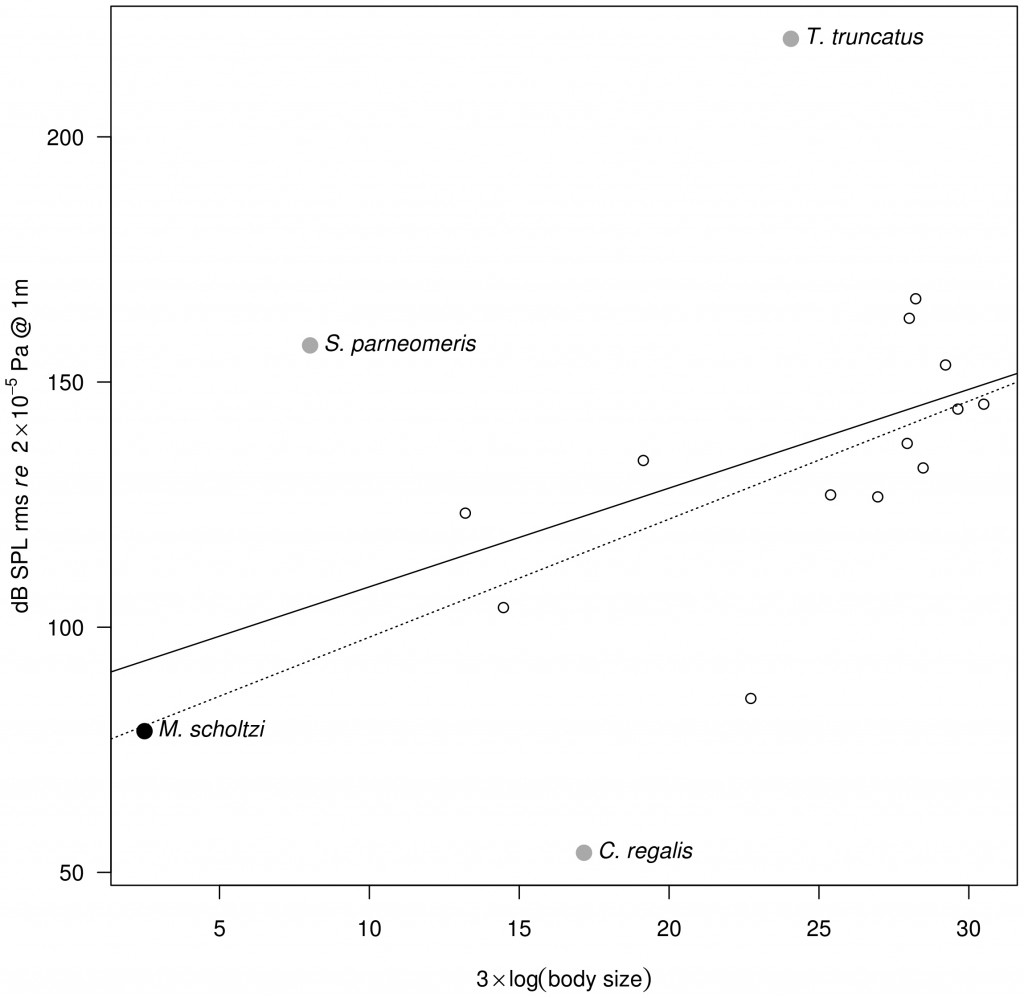
વિશે વધુ ચોક્કસ “ચીસો”, ભૂલો (આ કિસ્સામાં ભૂલો યોગ્ય છે; Corixidae હુકમ Hemiptera સંબંધ – સાચા માંકડ) stridulating તેવી શક્યતા છે – એકસાથે સળીયાથી બે ભાગોમાં exhaling હવા બદલે અવાજ પેદા કરવા માટે, પટપટાવી, વગેરે… લેખમાં લેખકો એવી ધારણા સેવે છે “ધ્વનિ અધિકાર paramere પર પાર્સ stridens સળીયાથી દ્વારા ઉત્પાદિત કરવામાં આવે છે (જનનેન્દ્રિયો ઉપાંગ) આઠમું ઉદરીય ખંડ ડાબી લોબ પર રિજ સામે [15]”. તેઓના ઉદ્ધરણ રોકીને વિના, તે જીનસ પુરુષો કે stridulation દેખાય સારી જેમાં સંવનન માટે આકર્ષણ માટે દસ્તાવેજીકૃત થયેલ છે. અને તમે અપેક્ષા કરશે, સમાચાર આઉટલેટ્સ અને વિજ્ઞાન પત્રકારો વાંચી “જનનેન્દ્રિયો ઉપાંગ” અને ભાષાંતરિત કે શિશ્ન માટે: અને તમે વાર્તાઓ સાથે અંત આ જેમ. parameres કાર્ય ઢીલી કે ઈન્દ્રગોપ સમાન અનુવાદિત કરી શકાય છે કે વિરોધ માળખાં છે (સામાન્ય રીતે વાળ સાથે સશસ્ત્ર) લોભી માટે. આ તેમને ચોક્કસ ઉપયોગ અલગ હોઈ શકે છે પ્રજાતિઓ અથવા તો ઓર્ડર દ્વારા, પરંતુ તેઓ ખૂબ જ અલગ ફોર્મ શિશ્ન છે (= aedeagus) કારણ કે તેઓ ફક્ત મદદ સમાગમ સરળતા અને કોઇ વીર્ય ડિલીવર કરતું નથી. તેથી વાસ્તવમાં તમે જીની હોય “claspers” સાથે “rasping”. અને પાર્સ stridens શ્રેષ્ઠ ઉદાહરણ પર વધારે છે જૂના બ્લોગ આર્કિટાઇપ. આ માળખું પીળો નીચે હાયલાઇટ છે (અને કીડી ઉદર પર અસ્તિત્વમાં બને). પરંતુ ટૂંકમાં – તે એક નિયમિત નાળાકાર સપાટી વોશબોર્ડ સમાન છે. અંતે સજા ઉપર ટાંકવામાં અનુવાદ કરવો જોઈએ “પેટ કે જે એકસાથે ઘસવામાં છેડે બે માળખા બે આંગળીઓ snapping ગમે”.
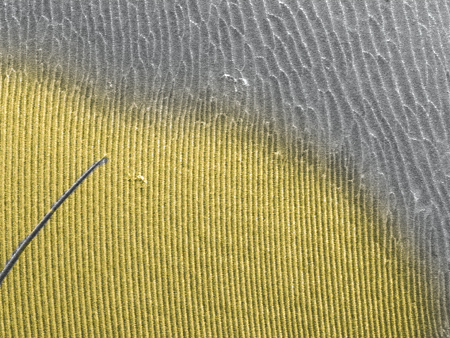 પાર્સ stridens વિગત (પીળો) એક Pachycondyla વિલોસ્સા કાર્યકર માં આગળ પેટની tergite પર (સ્કેનિંગ ઇલેક્ટ્રોન માઇક્રોગ્રાફ, રોબર્ટો કેલર / AMNH) Continue reading The incredibly loud world of bug sex
ક્રિસ Grinter દ્વારા, 20 મી જૂન પર, 2011 હું આ શ્રેણી સાથે રોલિંગ બોલ રાખો અને તે વધુ નિયમિત બનાવવા માટે પ્રયાસ કરવા જઈ રહ્યો છું,. હું પણ સાયન્સ ઓફ કેલિફોર્નિયા એકેડેમી અહીં મોટા સંગ્રહો માંથી દરેક અઠવાડિયે એક નવી પ્રજાતિઓ હાયલાઇટ પર ધ્યાન કેન્દ્રિત કરશે. આ મારા માટે પૂરતી સામગ્રી આપવી જોઇએ… સો ઓછા થોડા વર્ષ.
 Grammia edwardsii (Erebidae: આર્ક્ટિના) આ અઠવાડિયે માતાનો નમૂનો વાઘ શલભ છે Grammia edwardsii. થોડા વર્ષો પહેલા સુધી શલભ આ કુટુંબ સ્લાઇડ અલગ વિચારણા કરવામાં આવી હતી – પરંતુ તાજેતરના પરમાણુ અને આકારવિજ્ઞાન વિશ્લેષણ તે Noctuid હકીકત છે કે જે બતાવે છે. Erebidae આ સ્લાઇડ અને Arctiidae અંદર થી બહાર પડાઇ હતી પરિવાર તેમાં મૂકવામાં આવી હતી, આ ઉપકુળ Arctiinae તેમને દેવાનો. જે રીતે બહાર બરાબર બોરિંગ વર્ગીકરણ – બધા બધી, તે એક સુંદર મોથ છે અને લગભગ કંઇ તે વિશે ઓળખાય છે. આ નમૂનો માં સાન ફ્રાન્સિસ્કો માં એકત્રિત કરવામાં આવી હતી 1904 – હકીકતમાં આ પ્રજાતિઓ ઓળખાય લગભગ તમામ પકડવા સદીની આસપાસ આ શહેર એકત્રિત કરવામાં આવ્યા હતા. આ શલભ વિપુલ અને વ્યાપક જેવું જ દેખાય છે જ્યારે Grammia શણગારવામાં, આંખો બંધ વિશ્લેષણ, પાંખના આકાર અને એન્ટેના આ ખરેખર એક અલગ પ્રજાતિ છે કે જે જાળવવા. હું છેલ્લા નમૂનો 1920 આસપાસ એકત્રિત કરવામાં આવી હતી માને છે અને તે છે, કારણ કે આવી નથી જોયો છે. તે આ શલભ છેલ્લા કોર્સ પર લુપ્ત બની શકે છે તેવી શક્યતા છે અને કમનસીબ છે 100 એસએફ ખાડી પ્રદેશમાં વિકાસ વર્ષ. Grammia, સામાન્ય રીતે અને Arctiinae, યજમાન વિશિષ્ટતા ઉચ્ચ સ્તર માટે જાણીતા નથી; તેઓ થોડી ગાય જેવી હોઈ શકે છે અને તેમના પાથ માં લગભગ કંઈપણ પર નભે છે વલણ ધરાવે છે. આ શલભ આજે નિવાસસ્થાન ન હોય કે શા માટે તેથી તે કોયડારૂપ મૂંઝવનારું રહે, પણ શહેરના જેથી ભારે ખલેલ માં. કદાચ આ શલભ ખાડી આસપાસના મીઠું કળણ ક્ષેત્રોમાં વિશેષતા – બધા ત્યારથી કારણે રિયલ એસ્ટેટ માટે લેન્ડફિલ બહાર લૂછી કરવામાં આવી છે, જે (1/3 સમગ્ર ખાડી ભરવા માટે ગુમાવી હતી). અથવા કદાચ આ શલભ અમારી સાથે આજે પણ રહે છે, પરંતુ તે પ્રજાતિઓ ઉડતી એક ઉડાઉ જવાબ દિવસ છે કારણ કે એકત્રિત ક્યારેય છે. હું હંમેશા એક નાની નારંગી અસ્પષ્ટતા માટે વસંત પાર્ક મારા આંખ બહાર રાખવા…
|
નાસ્તિકતા
|














